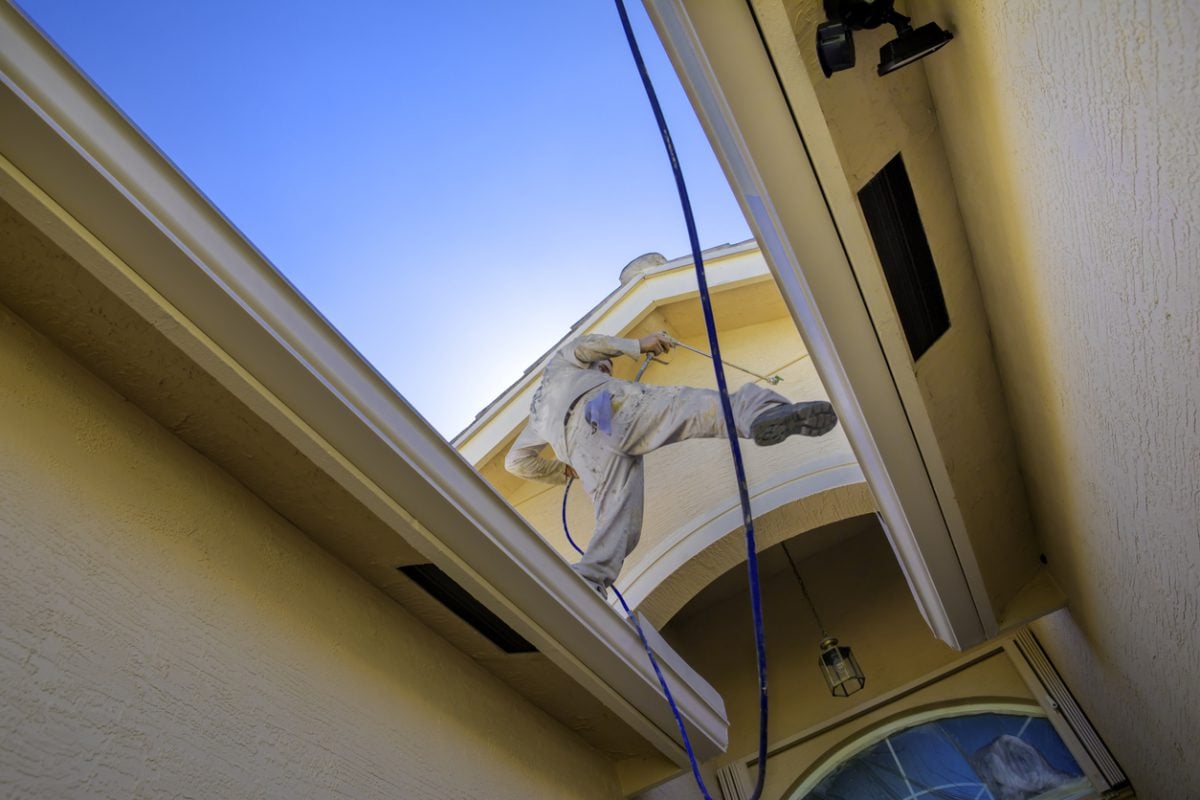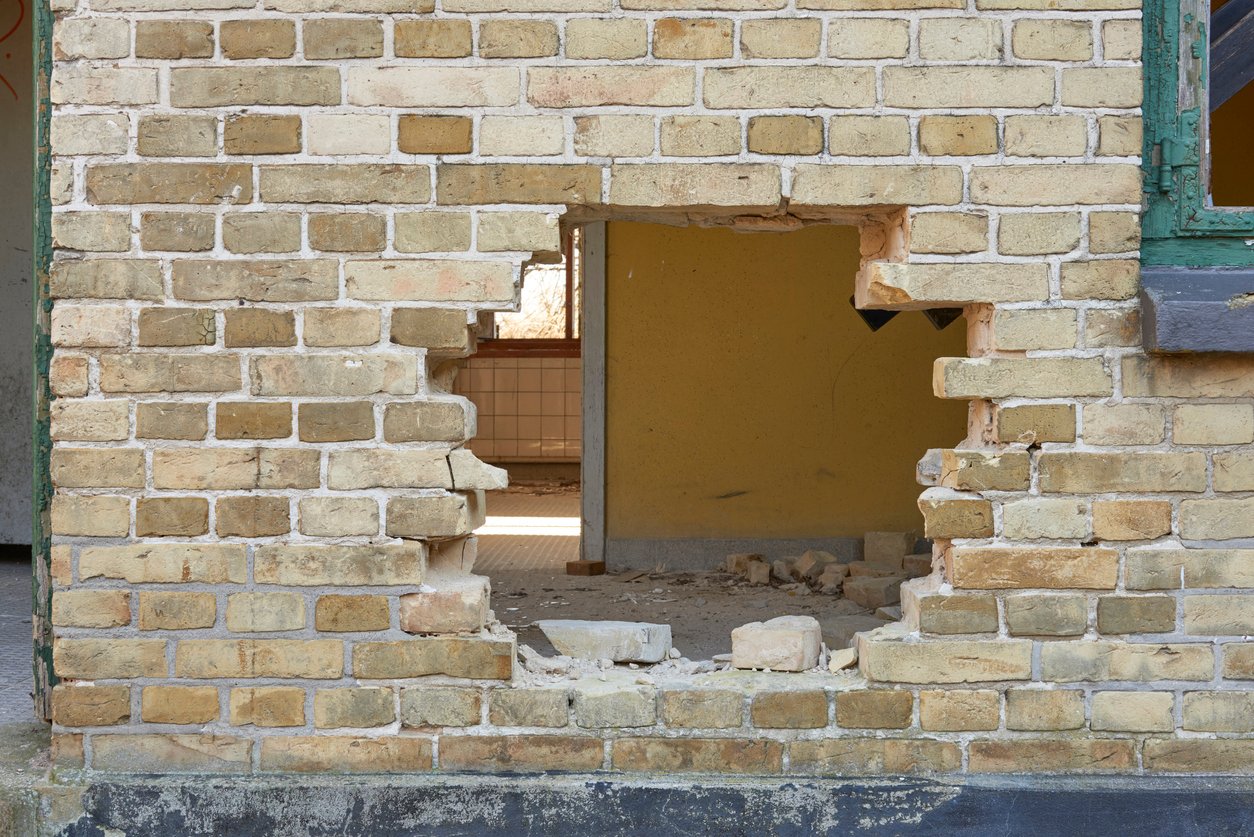10 Most Common Construction Mistakes
0%
A look at some of the most common contractor errors and how to avoid them to keep your construction projects safe, productive and profitable
One of the last things any contractor wants to happen during the final stage of a build is to discover the project has gone over budget or that deadlines won’t be met. And the very last thing they want is for any of their workers to be injured on a job site. But contractors are people, too. They make mistakes. Knowing which pitfalls are the most pervasive is the first step in avoiding them. Let’s look at a few common construction mistakes — as well as their easy fixes — to ensure you’re reducing accidents, keeping projects on budget, and hitting deadlines with pinpoint accuracy.

1. Not scheduling regular safety trainings
Safety is and should always be your number one priority on the job site. Without proper measures in place, you risk putting your workers in danger. Safety trainings shouldn’t be a one-time event, either. Regulations are always changing — not to mention your workforce, too — which means you should be scheduling regular trainings to ensure proper safety is always at the top of everyone’s mind.
2. Neglecting basic safety measures
Staying up to date on basic safety protocols and requirements should inform agendas for those regularly scheduled trainings. The Occupational Safety and Health Administration (OSHA) keeps a current list of recommendations, requirements, and tips covering fall prevention, proper scaffold use, ladder safety, and more. Consider these required, not recommended reading. At best, you could be fined for failing to comply. At worst, you could be putting your workers in life-threatening situations.
Accidents will happen, but the more organized and prepared contractors and crews are, the better the chances of reducing such tragedies. Modern technologies have made it significantly easier to ensure that all-important safety steps get followed. We’re seeing wearable, connected safety equipment to monitor things like heart rate, heat and stress levels and more. Meanwhile, using cloud-based project and field-management software, crews can ensure safety collaboration is achieved, all proper steps are followed, and it all gets documented in one place. Construction is never without risk, but working smarter means working safer.
3. Not keeping crews hydrated
The body’s greatest tool for overcoming heat is sweating. But in order to produce enough sweat to cool our bodies, we need to stay properly hydrated. That doesn’t mean sipping soft drinks, juice, or alcohol, either. Water is your crew’s best friend. Ensure your team is taking frequent breaks and sipping small amounts of water often. A hydrated crew is a happy, healthy, and productive crew.

4. Avoiding scheduling issues
The schedule sets the tone for your entire job. If one cog in the wheel stops working, the entire thing could come to a grinding halt. Common issues include incomplete schedules, miscommunications about obtaining critical materials, and failure to consider physical and weather constraints. Collaborative and integrated project management software with scheduling management capabilities solves many of these issues; so does a renewed commitment to detail.
5. Relying on an ineffective technology
Long gone are the days of abacuses and spreadsheets when it comes to taking account of your finances — or at least they should be. Savvy contractors know accounting software for construction projects helps lower risk and enhance reporting, all while boosting the bottom line.
With today’s construction demands, operating with poorly connected software or data, cloud-based accessibility or modern applications, such as automated workflows and business intelligence can cripple a contractors’ ability to compete with modern, digital contractors. Inefficiencies, mistakes and old or lost data resulting from manual human processes can cost contractors millions of dollars. Moving to a fully-integrated, cloud-based construction management platform brings modernization and balance to frenzied construction processes, helping contractors boost productivity and profitability.
Poorly connected software or data...can cost contractors millions of dollars.
6. Hiring the wrong people
Employee turnover is unavoidable. Hiring the wrong people is not. To avoid high turnover rates, vet candidates thoroughly and choose those with a wide skill set. Surround yourself with people you can trust. This will free you up to make the big decisions.
With construction HR departments strained with day-to-day tasks, it takes valuable time away from ensuring that the right workers are always being hired and assigned to the right jobs. Valuing employees, making their work experiences easy and creating high morale on jobsites helps with that. But when the inevitable comes in this era of labor shortage, vet candidates thoroughly and choose those with the widest of skill sets. Having a progressive business model and embracing technology like intuitive, construction-specific HR software not only helps improve your existing workforce but helps attract more tech-savvy new employees.
Diversification is another important factor to consider in the hiring process. Diversification takes many forms in the world of contracting but neglecting either of the main forms — a diversified workforce or a diversified project list — can lead to stagnation, incredibly siloed thinking and stifled future growth. By embracing diversification in both areas, the company itself grows from within, learning from a mixture of employees, both in the field and in the leadership sector. By bringing new expertise and experience into the fold and staying on top of industry trends, your company can challenge for a wider array of project types, bringing more revenue potential and providing deeper levels of protections should market downturns occur or business opportunities in a particular field shrink.

7. Growing too fast and taking on jobs that are too big
All it takes is a taste of success to want another bite at the apple. Be cautious, however, as getting too big for your britches is an easy yet costly mistake to make. Stay the course, grow smart, and make sure you’re allocating time and expenses properly to avoid neglecting other areas of the business.
Of course, not jumping on opportunities when available can limit your future potential. Using the right construction management software to help you understand workloads, see opportunities and help you grow smartly by allocating time and expenses properly can help you scale appropriately. It’s important to choose the right software solutions that can scale and grow with your organization’s needs.

8. Overestimating or underestimating costs
Doing your due diligence is a big part of a successful build. You may not even be able to gauge a project’s profitability until it’s completed. That requires some legwork on your part. One of the most difficult costs to estimate is labor. Looking at costs per square foot and accounting for as much detailed labor information as possible can help you sidestep a budgeting fiasco.
Underestimating jobs means you may lose money on those jobs you once coveted. Having the ability to better predict the costs for and forecast upcoming projects can have a dramatic effect on the accuracy of bids, helping to win more work. Having the latest technology and software like an intuitive construction business intelligence solution delivers a deeper understanding of project data and the analytic power to project future projects and bid accordingly. Once work is won, modern software can make it easy to set up projects from bid information, and it helps improve efficiency and manage job costs during construction to achieve the highest performance.
9. Failing to expect the unexpected
They say the best laid plans of mice and men (and contractors) often go awry. Expecting smooth sailing at every turn is folly. Good contractors know how to account for variables like weather, personnel changes, budgeting issues, and the like. Understanding how to respond when something doesn’t go as planned means having not only a plan B, but a plan C, D, E, and F.
It’s always a good idea to prepare for the next recession or downturn now, so the company can avoid painful losses. The better your software and technology, the more you’ll be able to plan for — and adapt to — the future. This also includes thinking about the future leaders of your company with proper succession planning to ensure the business is always in good hands. Not looking to the future means that when adversity hits, a contractor has nothing to rely on to set themselves apart and stay ahead of the competition. Working now — when things are going well — to improve technology and efficiencies by diversifying business, setting aside money or upgrading technology that will cut costs and improve productivity will not only help current processes, but set the company up to win jobs even in the toughest of times.

10. Relying on manual processes
Worse than outdated software or solutions not designed for construction is no software platform at all. Manual processes, time-intensive spreadsheets, and legacy technology not only slow down the construction process — they prevent you from keeping up with your competition.
Amazingly, some contractors still rely on paper, pen and spreadsheets to track and manage projects. These manual construction processes leave every action within a project vulnerable to mistakes and inefficiencies. Deploying the right software, designed for construction, and staying up to date on new features and functionality available helps boost efficiency, drive down costs, keep your projects safe, and allow you to finish on time and on budget.
Your entire organization needs to embrace technology changes if the company is to modernize and grow effectively as one. As everyone strives to do more with less, adopting new technologies across the board ensures that one area of the company doesn’t reject new technology while others embrace it. The key to successful technology adoption is communicating change that allows your team the time to understand, digest and embrace the decision. Incorporate others’ input into technology reviews and decisions, getting buy-in along the way, and use feedback from the end users before making changes. These strategies encourage everyone to embrace change management.
We invite you to connect with us and other industry professionals to stay up to date on new technologies and capabilities. Explore our suite of construction project management software and solutions to learn which products can help keep your build safe, on time, and on budget.




